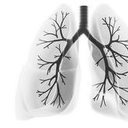Ethanol extract and its dichloromethane fraction of Alpinia oxyphylla Miquel exhibited hepatoprotective effects against CCl4-induced oxidative damage in vitro and in vivo with the involvement of Nrf2.
Schlüsselwörter
Abstrakt
Alpinia oxyphylla Miq. (A. oxyphylla), as a kind of medicine which also be used as food, is widely used in East Asian for the treatment of dyspepsia, diarrhea, abdominal pain and deficiency cold of spleen and stomach. This study aimed to investigate the protective effects of ethanol extract (EE) and its dichloromethane fraction (DM) of A. oxyphylla, which are rich in phenolic compounds, against CCl4-induced hepatic injury in vitro and in vivo. EE, DM and silymarin ameliorated CCl4-induced decrease of cell viability and increase of reactive oxygen species (ROS) in HepG2 cells. The CCl4-induced changes of glutathione (GSH) and methane dicarboxylic aldehyde (MDA) levels, and the decrease of superoxide dismutase (SOD) and catalase (CAT) activities were all restored with the pretreatment of EE, DM and silymarin. The results in liver injury model in rats showed that EE, DM and silymarin could significant decrease the levels of serum aspartate aminotransferase (AST), alanine aminotransferase (ALT), alkaline phosphatase (ALP) and total bilirubin than the model group. Liver histopathology revealed that EE and DM attenuated the incidence of liver lesions triggered by CCl4 intoxication. They also effectively relieved CCl4-induced oxidative damage. Western blot analysis indicated NF-E2-related factor (Nrf2) pathway played an critical role in the protection of EE and DM against CCl4-induced oxidative stress. In conclusion, the extracts from A. oxyphylla might be used as hepatoprotective agents.



